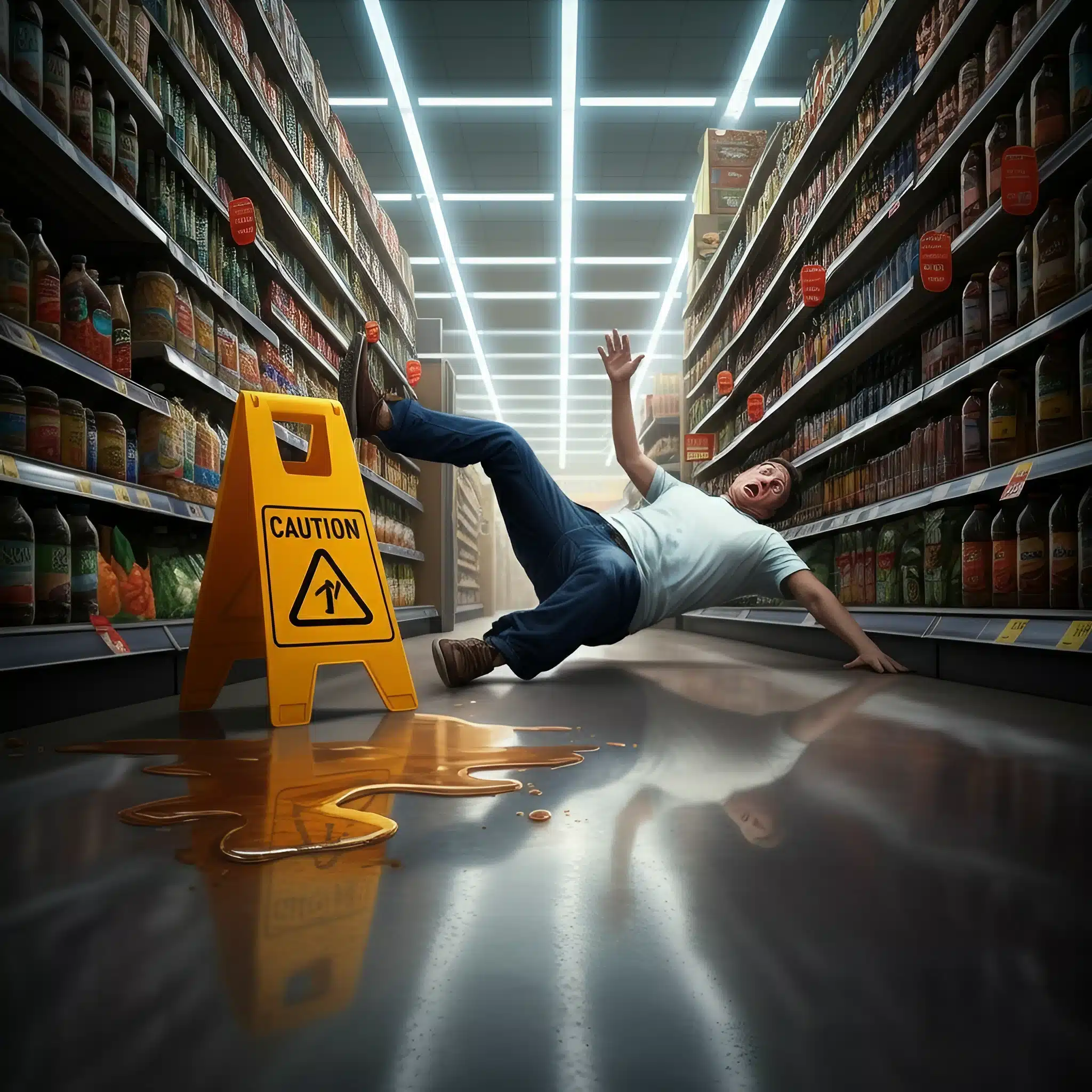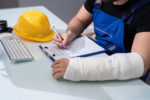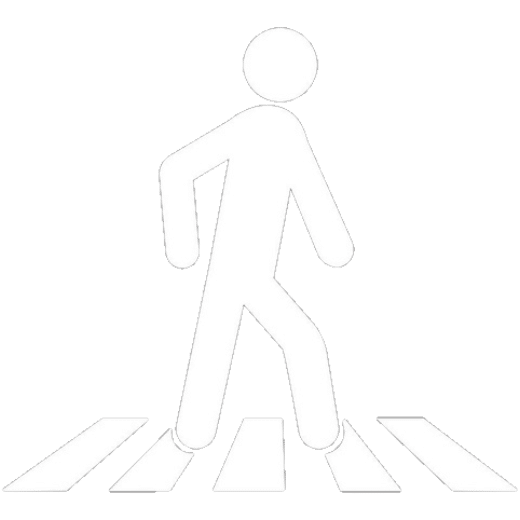When you head to a grocery or convenience store, the last thing you expect is to leave with an injury. Unfortunately, accidents in retail spaces are more common than you might think, and they can lead to severe physical, emotional, and financial consequences. From slipping on spilled liquids to being struck by falling merchandise, these incidents are often preventable and may result from negligence on the part of the store.
If you’ve been injured in a retail setting, determining who is responsible and what steps you should take can feel overwhelming. This guide will explore common hazards, explain how liability is established, and outline how to seek justice and proper compensation.
Common Hazards in Grocery and Convenience Stores
Grocery and convenience stores are bustling environments where hazards can easily arise. Understanding what risks to watch for can help you identify potential negligence.
Spills and Slippery Surfaces
One of the most frequent causes of injury in stores is slip-and-fall accidents due to spilled liquids, wet floors, or other slippery surfaces. For example:
- Case Example: A customer in a grocery store slips on an unmarked puddle of spilled milk, breaking their hip. Surveillance footage reveals that employees failed to place warning signs or clean up the hazard promptly.
Falling Merchandise
Improperly stacked items or overloaded shelves can result in merchandise toppling onto unsuspecting customers. These accidents are both dangerous and preventable.
- Case Example: A shopper in a convenience store suffers a concussion when boxes fall from a high shelf. Witnesses and incident reports expose the store’s careless stocking practices.
Negligent Maintenance
Stores are responsible for maintaining a safe environment. Poorly maintained flooring, loose mats, or damaged fixtures can cause serious trip-and-fall accidents.
- Case Example: A faulty tile in a store aisle causes a customer to trip and twist their ankle, leading to months of therapy. Maintenance records demonstrate a history of neglect.
Retail spaces have a duty to identify and eliminate these risks before they harm anyone. If they fail to do so, they may face liability.
Establishing Liability: Negligence and Duty of Care
To hold a grocery or convenience store responsible for your injuries, you must establish that the store was negligent and failed in its “duty of care.” But what does this mean?
Understanding Duty of Care
Stores have a legal obligation to ensure the safety of their customers. This involves:
- Regularly inspecting the premises for hazards.
- Taking prompt action to remove or mitigate risks (e.g., cleaning spills or repairing broken fixtures).
- Providing adequate warning (e.g., placing “Caution: Wet Floor” signs).
Proving Negligence
Proving negligence involves showing that the store failed to meet its duty of care and that this failure directly caused your injury. You’ll typically need to establish:
- The Hazard: A dangerous condition existed.
- Knowledge: The store either knew or should have known about this hazard.
- Failure to Act: The store did not take reasonable steps to prevent harm.
For example, in the slip-and-fall case mentioned earlier, failure to clean up the spilled milk or warn customers about it could indicate negligence.
Types of Evidence to Collect After an Accident
If an accident occurs, collecting the right evidence is crucial in building a strong case. Here’s what you should gather:
1. Photos and Videos
Capture images or videos of the hazard that caused your accident (e.g., a wet floor, broken tile, or misplaced merchandise). Visual evidence can be powerful in proving negligence.
2. Witness Contact Information
If other customers or staff members saw the accident or the hazardous condition, ask for their contact details. Their testimonies can substantiate your claims.
3. Incident Reports
Report the accident to store management immediately and request a copy of the completed incident report. Ensure the report accurately reflects what happened.
4. Surveillance Footage
Many stores have security cameras. Footage from these cameras can provide undeniable proof of the conditions leading to your injury.
5. Medical Records
Seek medical attention right away and keep thorough records of your injuries and treatment. These documents are vital when pursuing compensation.
6. Maintenance Logs and Policies
If possible, obtain copies of the store’s maintenance logs or employee training policies. These can reveal patterns of negligence or inadequate safety protocols.
The more evidence you can provide, the stronger your case will be.
Seeking Compensation: Medical Bills, Lost Wages, and Pain & Suffering
Accidents in retail stores can result in significant financial and emotional burdens. Fortunately, you may be entitled to seek compensation for a variety of damages.
Medical Expenses
Compensation should cover the full extent of your medical care, including:
- Emergency treatments.
- Hospital stays.
- Physical therapy or rehabilitation.
- Future medical costs related to the injury.
Lost Wages and Reduced Earning Capacity
If your injury prevents you from working, you can seek damages for lost wages. If your ability to work in the future is affected, you may also claim reduced earning capacity.
Pain and Suffering
Beyond financial losses, injuries often have a profound emotional impact. Compensation for pain and suffering accounts for both physical discomfort and emotional distress caused by the accident.
Out-of-Pocket Costs
You can also claim reimbursement for out-of-pocket expenses, such as transportation to medical appointments or hiring help for household tasks while you recover.
The Role of a Personal Injury Attorney
Navigating a personal injury case can be complicated. A skilled attorney brings expertise and advocacy to your side, helping you build a strong case and secure fair compensation.
How Can an Attorney Help?
- Case Evaluation: An attorney will review the details of your accident and determine whether you have a viable claim.
- Gathering Evidence: They know what evidence carries the most weight and will work to obtain it on your behalf.
- Proving Liability: An attorney understands the nuances of establishing negligence and will strengthen your case with legal expertise.
- Negotiating with Insurers: Insurance companies often try to minimize payouts. Your attorney will negotiate for the full compensation you deserve.
- Litigating if Necessary: If a fair settlement cannot be reached, a personal injury lawyer will represent you in court.
Choosing the Right Attorney
Look for a lawyer with experience in retail injury cases and a proven track record of successful outcomes. Many offer free consultations, so take advantage of this to find the right fit for your needs.
Protecting Your Rights After a Retail Accident
Accidents in grocery and convenience stores can turn your life upside down, but you don’t have to face the aftermath alone. By understanding your rights, collecting strong evidence, and seeking experienced legal support, you can hold negligent stores accountable and secure the compensation you need to move forward.
If you or someone you know has been injured in a retail setting, don’t wait. Reach out to a qualified personal injury attorney to evaluate your case and start the process of protecting your rights.





























